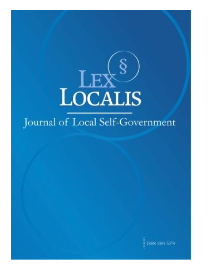DRAMATIC ENVIRONMENTAL SHIFTS IN 2025: A MULTI-HAZARD EARTH ANALYSIS
DOI:
https://doi.org/10.52152/801037Keywords:
Climate change; Sea level rise; Ring of Fire; Solar activity; Geomagnetic drift; Mega-tsunami; Multi-hazard risk; Earth system science, SDG (SDG 13 (Climate Action) - climate change and mitigation strategies, SDG 14 (Life Below Water) - sea level rise and ocean impacts, SDG 11 (Sustainable Cities and Communities) - disaster risk reduction and resilient infrastructure, SDG 1 (No Poverty) - disaster impacts on vulnerable populations, SDG 3 (Good Health and Well-being) - environmental health risks, SDG 6 (Clean Water and Sanitation) - coastal flooding and water securityAbstract
Background: The year 2025 has witnessed unprecedented convergence of environmental hazards across multiple Earth system domains, including anomalous climate patterns, accelerated sea-level rise, heightened seismicity in the Pacific Ring of Fire, intensified solar activity, and continued geomagnetic pole drift. This multi-hazard scenario necessitates comprehensive analysis to understand systemic risks and interconnected vulnerabilities.
Methods: We conducted a systematic synthesis of observational data from major agencies (NASA, NOAA, USGS, IPCC) and peer-reviewed literature published between January and August 2025. Environmental events were categorized using a multi-hazard framework, with quantitative analysis of trends, statistical assessment of anomalies, and evaluation of cascading risk pathways. Data quality assessment, temporal correlation analysis, and risk interdependency mapping were performed to identify compound hazard scenarios.
Findings: Global mean surface temperature anomalies reached historic levels, with sea-level rise accelerating to 4.5 mm/year—a doubling from baseline rates. The Pacific Ring of Fire experienced exceptional seismic activity, culminating in the Mw 8.8 Kamchatka earthquake in July 2025, which generated Pacific-wide tsunami alerts and provided unprecedented observational data through the SWOT satellite mission. Solar Cycle 25 produced significant coronal mass ejections from active region AR 4168, while the geomagnetic north pole continued its rapid drift toward Siberia at approximately 40 km/year. These concurrent hazards demonstrate significant multi-risk exposure with compounding vulnerabilities across critical infrastructure systems.
Conclusion: The 2025 environmental anomalies represent a confluence of natural variability and anthropogenic amplification effects. While individual events align with established Earth system processes, their temporal convergence and intensity magnification indicate increasing systemic risk. Integrated monitoring systems, enhanced data assimilation capabilities, and multi-hazard risk governance frameworks are essential for building resilience against future compound environmental hazards.
Downloads
Published
Issue
Section
License
Copyright (c) 2025 Lex localis - Journal of Local Self-Government

This work is licensed under a Creative Commons Attribution-NonCommercial-NoDerivatives 4.0 International License.








